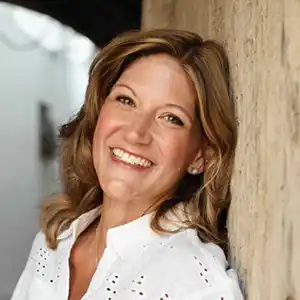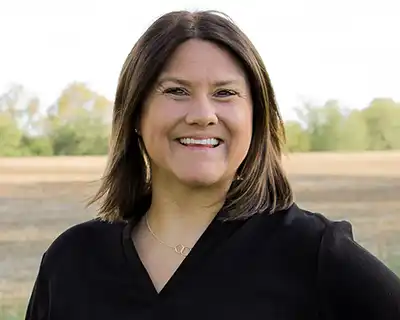Throughout 2021, Trust In Food is inviting leaders of the Foundational Partners of America’s Conservation Ag Movement to share their vision for the future of conservation and sustainability in U.S. agriculture. In this post, we spotlight Rajan Gajaria, executive vice president for business platforms at Corteva Agriscience, an ACAM partner.
Tell us a bit about yourself. How did you arrive in this leadership role within your organization, and how does a commitment to sustainability/conservation inform how you show up to work each day?
I have had the privilege of working with Corteva, starting with one of its legacy companies, for the last 28 years. My journey started in Mumbai, India, but for last 22 years I have been in Indianapolis. I’ve got a bachelor’s in electronic engineering and a master’s degree in marketing and finance.
My chance to get into ag came straight out of business school. It’s been a fascinating journey. I’ve worked in functions such as finance and human resources, but for the most part I’ve been in front of customers, leading our commercial organizations in different parts of our U.S. and global business.
At Corteva [formed in 2019], I currently lead our Business Platforms group, which is the function that drives the strategy of the company in coordination with our Research and Commercial organizations. We ensure we are aligning all of our resources—whether R&D or manufacturing—and talk very closely with the commercial organization — to continue to add value to our farmer-customers in the short, medium and long term. It’s been a privilege.
I remember this like yesterday: About five years ago, we were putting together the purpose of the company, asking ‘Why does Corteva exist?’ We had lots of conversations and very quickly navigated into, ‘It’s truly about the farmers.’ That was the easy thing to do.
But we also need to make sure we take care of consumers. We talked about how the consumer is important in agriculture. We didn’t call it sustainability, but we talked about ensuring progress for generations to come. That is woven into why we exist.
Every decision we make—whether R&D investment, every product we bring to market, every collaboration—is driven by our purpose statement: “Enriching lives of those who produce and those who consume, ensuring progress for generations to come.”
What’s one book you’ve read recently that’s challenging how you think about sustainability, conservation or the future of food and agriculture?
“The Innovator’s Dilemma [When New Technologies Cause Great Firms to Fail],” by Clayton Christiansen. The dilemma is what is our core business, versus what might seem to be an ancillary business or might not have the right ROI in conventional business terms today, but it could very much disrupt our business. We have to embrace new technology and allocate resources to that. We believe technology will not only help farmers, agriculture and sustainability—it is the right thing to do for Corteva.
I’m also a true believer that you never go wrong doing the right thing. The right thing is to truly focus on sustainability.
In a sentence, describe Corteva for executives in our audience who are unfamiliar with your work.
We do exactly what we say: “Enrich the lives of those who produce and those who consume, ensuring progress for generations to come.” We innovate across crop protection, seeds and digital to make sure we bring the right tools and resources to farmers around to the world, to make sure they can do what they’re meant to do, and to ensure they’re able to grow crops successfully. Ensuring innovation translates to value for consumers.
What is the biggest sustainability challenge your organization is facing, and how are you navigating possible ways to address and overcome that challenge?
We have a lot of good activities going on. We’ve divided our sustainability goals into four buckets:
- Sustainability for the farmer.
- Sustainability of the land. What are the things we are doing to preserve or improve the soil profile and ensure nitrogen is where it needs to be?
- Sustainability within the communities where our employees and customers live and work. By nature, our business is in different parts of the world. We need to make sure those communities thrive, and we need to do that in a way that creates the right profitability for people and creates an environment where they can be healthy and happy.
- Sustainability of Corteva’s operations and manufacturing—how we internally think about sustainability. I think we’ve got some very good plans related to new tech we’re bringing to farmers, for the land itself. We’ve won six Green Chemistry awards for different products we are bringing to the marketplace.
I feel really good about progress toward the first two with new product launches and investment in communities. Additionally, we have committed to addressing climate resilience. Earlier this year, we published inaugural sustainability report, including the Company’s Greenhouse Gas Emissions (GHG) targets. These GHG targets underscore Corteva’s intent to become a more carbon efficient business. There is a whole ecosystem here. How do we work with companies providing us electricity to run our farms?. In line with our commitments, we continue to drive execution on sustainable innovation, production efficiencies and transition to renewable energy sources..
It’s your perspective that carbon markets are only the beginning of a revolution for ecosystem services. What will the next wave of ecosystem services and products look like, and how can farmers and other business leaders jump into that space?
I think, first and foremost, carbon is an important piece, so I’m not taking away from that. We are in our infancy of seeing how we can work with agriculture and carbon sequestration and are excited about current and future industry collaborations in the space to further strengthen this opportunity for farmers.
Fundamentally, I think there is high demand for carbon credits and farmers have an important role to play. We have the privilege to partner with farmers in that space. I think the industry is going to evolve.
Clearly, nitrogen has an important role. We have one of largest nitrogen stabilizer businesses here in the U.S. and there are other concepts we’re working on to ensure nitrogen is available to the plant when it needs it.
We’re also looking at changing chemistries. We launched a cereal herbicide called Arylex. You need 5 to 10 grams of that product per hectare. If you think about it, two dimes on my thumb—that’s the amount of product needed per hectare. We’re seeing how continued adoption of this product remains is strong. Another product – Rinskor – is similar. It has a very low use rate, different modes of action, and while initially for rice farmers in Asia Pacific, it also now has uses globally for corn, pastures and land management, sugarcane, sugar beets and more.
Whether it be targeted work on crop protection or nitrogen, when we launch new products, that all goes toward an ecosystem that’s going to be healthy.
Our Enlist™ weed control system is a superior weed management solution for farmers composed of new herbicide-tolerant traits and herbicide solutions, providing exceptional weed control in Enlist corn, soybeans and cotton. Technology like this helps ensure farmers can use no-tillage or low-tillage management practices which are better for the soil and the environment. What’s more, Enlist® cotton and Enlist E3® soybean crops are tolerant to three herbicide modes of action, 2,4-D, glufosinate and glyphosate, which allows for a robust integrated weed management program to manage resistance and improve the sustainability of weed control practices.
Corteva just published (as of June 2, 2021) its first ever corporate sustainability report. What are some areas of impact within Corteva’s sustainability program that give you the greatest pride? What are you doubling down on in order to have impact to demonstrate in 2022?
We are truly proud of our innovation and new products we are launching, including digital tools.
A digital tool to highlight here includes LandVisor. Think about it as targeted crop protection. It’s a product which we’ve already launched for pastures here in the U.S. In places such as Texas and Oklahoma, pastures represent huge swaths of land. Cows graze there and maintaining the quality of the pasture is a big part of the rancher’s job. It’s really tough for a rancher to understand where and how weeds might be taking over their pasture using traditional methods such as riding or walking their acres.
Using satellite imaging, however, we help map the grazing land for the rancher and show where there may be a potential weed issue, including an invasive woody brush species called mesquite. It’s great when you’re cooking; it’s not when you’re managing pasture as it can make animals sick if eaten, in addition to it physically choking out beneficial forages. A targeted herbicide application – both in timing and placement — can be an effective solution to make sure you preserve pasture needed for grazing.
How you bring digital tools and tech along with your business, I think, is really going to help us in terms of the land. That is the first of many products we’re working on in targeted crop protection. It’s an area to watch out for.
How is Corteva engaging with the United Nations Food Systems Summit? To what degree is your global business focused on these ongoing dialogues as a strategic priority, and why does that matter to farmers here in the U.S.?
No one of us is as strong as all of us. Collaboration is a very key part of how we think about working. We are privileged to play a role in the United Nations Food Systems Summit. Our teams have participated in Europe and globally. We are truly strong believers in collaboration. We do that with universities, startups – really anybody who’s interested in aligning their plans and visions with the purpose that we have stated. The Summit was no different. It’s another manifestation of the fact we believe we all need to partner together for the challenges facing the planet.
What 3 sustainability/conservation trends have you most excited and optimistic about the future of U.S. agriculture and farming in the next four years?
There was a time when it may be perceived that you could either be sustainable or you could be profitable as a farmer. I think a lot of that mindset has changed. Farmers are very strong stewards of the land and that’s a big part of their legacy. It doesn’t matter if you are renting a farm or owning one. To pass on the farm from one generation to the next, you want to preserve the integrity of the land. It’s built into the basic psyche of farmers. New tools and incentives will make sure farmers continue to do right by the environment, and at the same time, help their profitability.
Farmers are now seen as a part of the solution. It is our privilege to help them along with that journey. That, in my opinion, is the single most positive trend I’ve seen in sustainability.
What one sustainability trend or issue keeps you up at night and gives you heartburn?
Fads. I think science has got to win, and you can’t have an up-and-down in which new fads come in and you just do something because someone is willing to pay for it. Innovation, science and technology should be at the heart of sustainability. We should hold ourselves to a high standard when it comes to innovation and technology for sustainability.
When the ship is sailing that direction, many might want to align their sails and say, ‘We’re doing something in sustainability, too.’ We need to watch out for greenwashing and ideas for farmers that may or may not pass the test of science.
Strong partnership between the public and policymakers, between innovators and farmers, is really the way to go so we don’t get caught up in a trend of ‘here today, gone tomorrow’.
What’s the single most important action step that sustainable food and ag professionals should be taking in the next 12 months?
Let science lead the way, and don’t be afraid of failure. We are in a space of success before perfection. You can wait for a perfect answer seven, eight, 10 years from now, because that’s too late. The action needs to be driven by science. That’s how we approach it. That’s what I think is really going to be needed.



